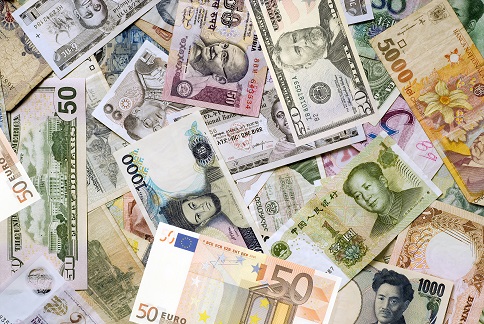
India’s forex reserves have been rising sharply since April’20. As per the latest data, India’s foreign exchange reserves stand at USD 611 billion. With the foreign exchange reserves crossing the USD 600 billion mark, India holds the fifth position in terms of the largest reserve holding country in the world. Various factors have contributed to this surge in forex reserves. Firstly, the savings in import bills benefited the country in increasing its forex reserves. India’s imports growth rate has been in the negative territory from April’20 to November’20, with the largest contraction witnessed in April’20 at 60 percent YoY. Export sector also witnessed a similar contraction. Yet, India reported a current account surplus of 0.9 percent of GDP in FY21. The falling crude prices during the pandemic-hit FY 21 helped the country in reducing its import bill. Petroleum and crude products (POL) have a share of around 26 percent of India’s total imports.
Secondly, capital inflows to the country through FII/FPI channel also witnessed a huge surge. This was mainly on account of the loose monetary policies that were implemented in the economies across the globe. US Federal Reserve and European Central Bank announced one of the largest monetary stimulus packages that include not just rate cuts but measures such as Quantitative Easing (QE). The cheap money from these economies came in search of better returns and found emerging markets like India as a favourable destination. From being the net sellers in the Indian market in March’20 at USD (-) 15 billion, FIIs turned net buyers in the Indian market at USD 9.7 billion in November’20.
Forex reserves provide a cushion for the RBI and government by ensuring financial stability. Globally, the markets are highly volatile as the inflow and outflow of the capital due to any change in the policy stance can impact the markets. A comfortable forex reserve would give ample space for the RBI to intervene in the market when needed. For instance, during the QE that was unleashed post the Global Financial Crisis (GFC) in 2008, emerging markets witnessed a huge surge in capital inflows, thereby increasing the vulnerability to sudden stops. It eventually happened during the taper-tantrum of 2013. The hint of a rate hike by the then Fed chief Bernanke led to a reverse flow of capital from emerging economies to the US. India was categorised as one among the fragile five economies along with South Africa, Indonesia, Brazil, and Turkey. The reverse flow of capital resulted in the depreciation of Indian rupee against US dollar. However, having a comfortable forex position would enable the RBI to sell the US dollar and buy the Indian rupee, thereby preventing the fall of the rupee. In the current scenario, RBI is accumulating the reserves to make use of it to prevent another episode of taper tantrum. Presently, there’s a high degree of uncertainty on whether there will be a change in the monetary policy stance by the Federal Reserve as the inflation rate is inching upwards in the US economy.
In the present scenario, the inflow of foreign capital should lead to an appreciation of the Indian rupee. However, RBI is preventing the appreciation of the Indian rupee by selling the Indian rupee and buying US dollar, thereby accumulating reserves. The appreciation of the Indian rupee could have a negative impact on the export sector. It would make the Indian exports uncompetitive, especially during a time when the global economy is recovering from the pandemic-induced crisis. The flip side of such an action could be that India would continue to remain in the US watch list of currency manipulators. The US categorise a country as a currency manipulator, if they meet any of the two criteria over a 12-month period (a) bilateral trade surplus with the US of over $20 billion; (b) current account surplus of at least 2 percent of GDP; (c) net purchase of foreign currency amounting to at least 2 percent of the country’s GDP.
Similarly, the excess liquidity caused by the selling of rupee could lead to inflationary pressure in the economy. The domestic economy is dealing with price pressure as the inflation rate measured by Consumer Price Index (CPI) breached the upper band of 6 percent. In June’21, the inflation rate is at 6.26 percent. Thus, having high forex reserves has its pros and cons. The RBI should act judiciously to minimise the negative impact of holding a high forex reserve.










Very compact presentation of market events. Because the title is Cost and Benefit, one of the benefit is a protection from threat of a Rating Downgrade. That could have found a mention, not to take away the succinct beauty of the content. Compliments.